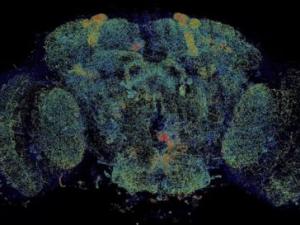

Research Expertise and Interest
imaging microscopy, biophysics
Research Description
Eric Betzig is a Professor of Molecular and Cell biology, a Senior Fellow at the Janelia Research Campus, and an Investigator of the Howard Hughes Medical Institute at the University of California, Berkeley. His Ph.D. thesis at Cornell University and subsequent work at AT&T Bell Labs involved the development of near-field optics – an early form of super-resolution microscopy. He left academia in 1995 to work in the machine tool industry, but returned ten years later when he and friend, Harald Hess, built the first super-resolution single molecule localization microscope in Harald’s living room. For this work, he is a co-recipient of the 2014 Nobel Prize in Chemistry. Today, he continues to develop new imaging tools to aid in biological discovery, including correlative super-resolution fluorescence and electron microscopy, 4D dynamic imaging of living systems with non-diffracting light sheets, and adaptive optical microscopy to recover optimal imaging performance deep within aberrating multicellular specimens.
Research Interests: From the 17th through the mid-20th century, beautifully artistic micrographs of living specimens were inextricably linked to biological discovery. However, in the latter half of the 20th century, microscopy took a back seat to the powerful new fields of genetics and biochemistry. Starting in the 1990s, the tables began to turn again, thanks to the widespread availability of computers, lasers, sensitive detectors, and fluorescence labeling techniques. The result has been a Cambrian explosion of new microscope technologies with the ability to understand the findings of genetics and biochemistry in the context of spatially complex and dynamic living systems. Eric Betzig's lab has been at the forefront of this revolution, which now demands a corresponding revolution in our ability to quantify and distill new biological insights from the rich, petabyte-scale data at high spatiotemporal resolution that we can now generate.
